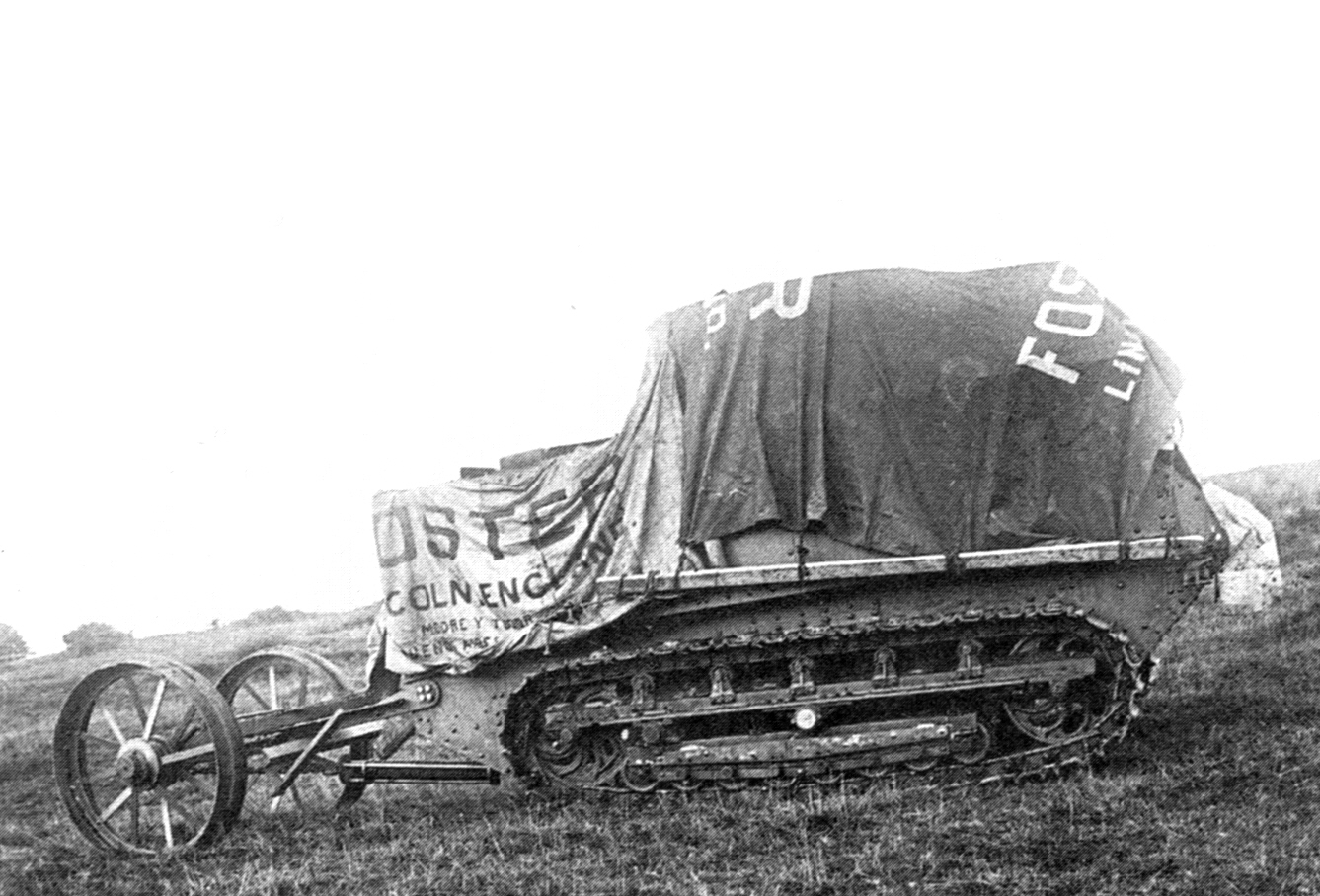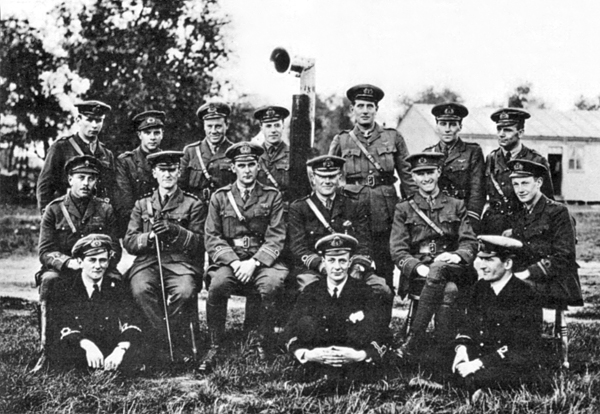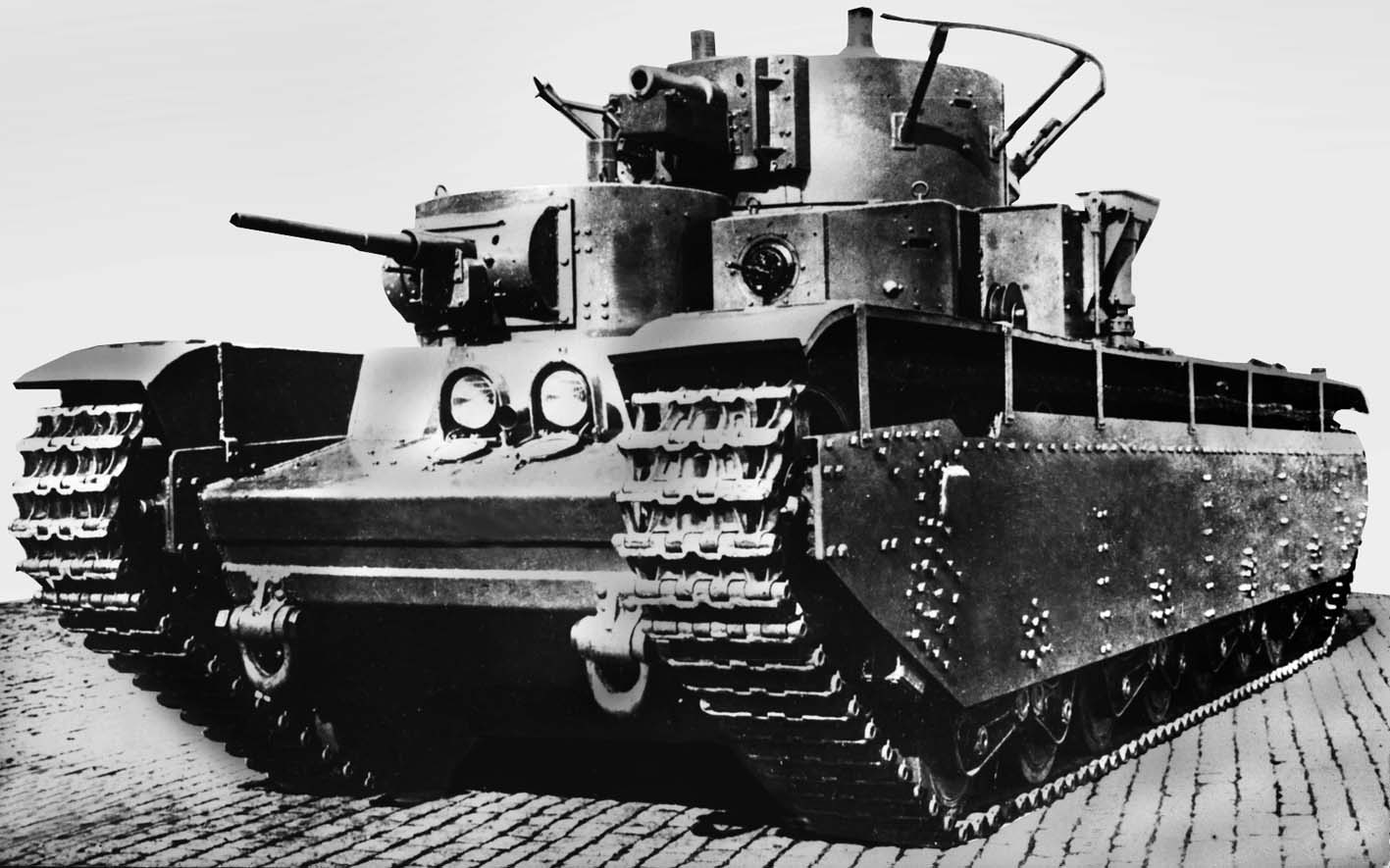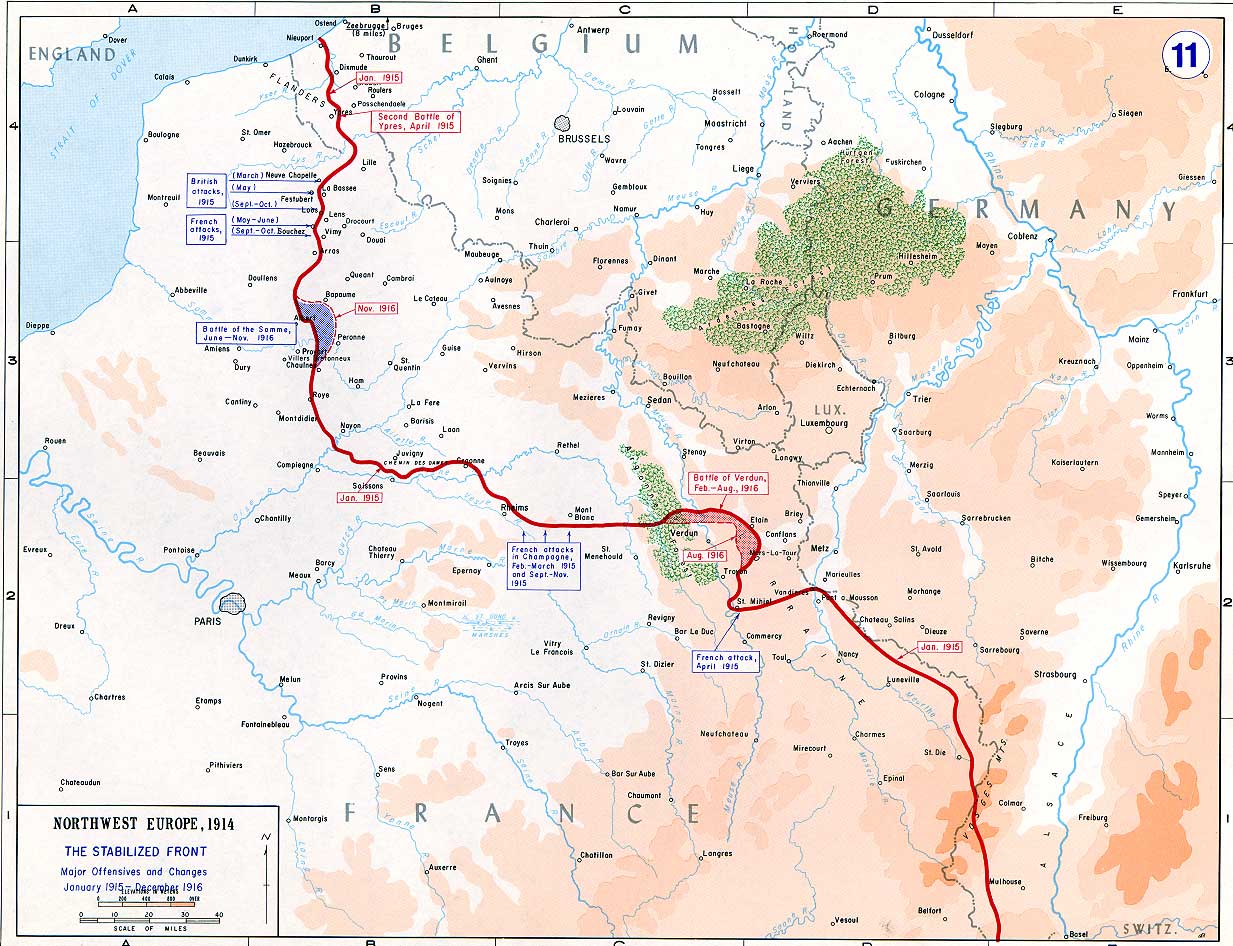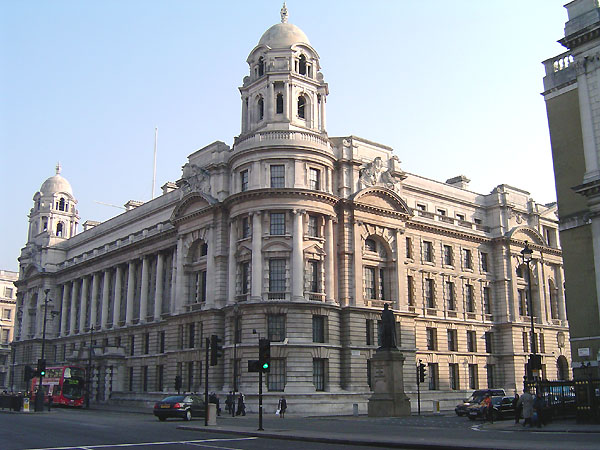|
Landships Committee
The Landship Committee was a small British committee formed during the First World War to develop armoured fighting vehicles for use on the Western Front. The eventual outcome was the creation of what is now called the tank. Established in February 1915 by First Lord of the Admiralty Winston Churchill, the Committee was composed mainly of naval officers, politicians and engineers. It was chaired by Eustace Tennyson-d'Eyncourt, Director of Naval Construction at the Admiralty. For secrecy, by December 1915 the name was changed to "the D.N.C.'s Committee" to disguise its purpose. Formation The committee was formed at Churchill's instruction in February 1915, in part from ideas by Colonel Ernest Swinton, who was then employed as a war correspondent for HM government, and by Maurice Hankey, Secretary of the Committee for Imperial Defence, who wrote Churchill a missive on 26 December 1914. Churchill on 5 January 1915 disclosed the Committee notion to Prime Minister H. H. Asquith ... [...More Info...] [...Related Items...] OR: [Wikipedia] [Google] [Baidu] |
Little Willie
Little Willie was a prototype in the development of the British Mark I tank. Constructed in the autumn of 1915 at the behest of the Landship Committee, it was the first completed tank prototype in history. ''Little Willie'' is the oldest surviving individual tank, and is preserved as one of the most famous pieces in the collection of The Tank Museum, Bovington, England. Number 1 Lincoln Machine Work on Little Willie's predecessor began in July 1915 by the Landship Committee to meet The United Kingdom's requirement in World War I for an armoured combat vehicle able to cross an trench. After several other projects where single and triple tracks had failed, on 22 July William Ashbee Tritton, director of the agricultural machinery company William Foster & Co. Ltd, William Foster & Company of Lincoln, Lincolnshire, Lincoln, was given the contract to develop a "Tritton Machine" with two tracks. It had to make use of the track assemblies – lengthened tracks and suspension element ... [...More Info...] [...Related Items...] OR: [Wikipedia] [Google] [Baidu] |
Royal Naval Air Service
The Royal Naval Air Service (RNAS) was the air arm of the Royal Navy, under the direction of the Admiralty (United Kingdom), Admiralty's Air Department, and existed formally from 1 July 1914 to 1 April 1918, when it was merged with the British Army's Royal Flying Corps to form the Royal Air Force (RAF), the world's first independent air force. It was replaced by the Fleet Air Arm, initially consisting of those RAF units that normally operated from ships, but emerging as a separate unit similar to the original RNAS by the time of the Second World War. History Background On 21 July 1908 Captain Reginald Bacon, who was a member of the Aerial Navigation Sub-Committee, submitted to the First Sea Lord John Fisher, 1st Baron Fisher, Sir John Fisher that a rigid airship based on the Imperial Germany, German Zeppelin be designed and constructed by the firm of Vickers. After much discussion on the Committee of Imperial Defence the suggestion was approved on 7 May 1909. Though Bacon ... [...More Info...] [...Related Items...] OR: [Wikipedia] [Google] [Baidu] |
History Of The Tank
The history of the tank includes all vehicles intended to advance under enemy fire while remaining protected. Beginning The principle of armored warfare can be compared with attempts to protect soldiers from enemy projectiles that existed since ancient times. The development of the explosion engine makes it possible to transport an armored vehicle more easily than with horses. One of the first traces of the use of an armored motor vehicle occurred during the Crimean War. Development World War I generated new demands for armoured self-propelled weapons which could navigate any kind of terrain, and this led to the development of the tank. The great weakness of the tank predecessor, the Armored car (military), armoured car, was that it required smooth terrain to move upon, and new developments were needed for cross-country capability. The tank was originally designed as a special weapon to solve an unusual tactical situation: the stalemate of the trenches on the Western Front ... [...More Info...] [...Related Items...] OR: [Wikipedia] [Google] [Baidu] |
United Kingdom In World War I
The United Kingdom of Great Britain and Ireland, United Kingdom was a leading Allies of World War I, Allied Power during the First World War of 1914–1918. They fought against the Central Powers, mainly German Empire, Germany. The armed forces were greatly expanded and reorganised—the war marked the founding of the Royal Air Force. The highly controversial introduction, in January 1916, of conscription for the first time in British history followed the raising of one of the largest all-volunteer armies in history, known as Kitchener's Army, of more than 2,000,000 men. The outbreak of war was a socially unifying event. Enthusiasm was widespread in 1914, and was similar to that across Europe. On the eve of war, there was serious domestic unrest amongst the labour and suffrage movements and especially in Ireland. But those conflicts were postponed. Significant sacrifices were called for in the name of defeating the Empire's enemies and many of those who could not fight contr ... [...More Info...] [...Related Items...] OR: [Wikipedia] [Google] [Baidu] |
The Land Ironclads
"The Land Ironclads" is a short story by British writer H. G. Wells, which originally appeared in the December 1903 issue of the ''Strand Magazine''. It features tank-like "land ironclads," armoured fighting vehicles that carry riflemen, engineers, and a captain, and are armed with semi-automatic rifles. Plot summary The story opens with an unnamed war correspondent and a young lieutenant surveying the calm of the battlefield. They reflect philosophically on the war between two unidentified armies. The time appears to be 1903 and the opponents are dug into trenches, each waiting for the other to attack, of the sort then common and being reported on daily from the Boer War. The men on the war correspondent's side are confident they will prevail, because they are all strong outdoor-types – men who know how to use a rifle and fight – while their enemies are townspeople, "a crowd of devitalised townsmen . . . They're clerks, they're factory hands, they're students, th ... [...More Info...] [...Related Items...] OR: [Wikipedia] [Google] [Baidu] |
Royal Commission On Awards To Inventors
{{UK-law-stub ...
A Royal Commission on Awards to Inventors is an occasional Royal Commission of the United Kingdom used to hear patent disputes. On 6 October 1919 the Commission was convened to hear 11 claims for the invention of the tank; one of the eleven "claimants" was a team of two (thus there were 12 individuals involved), two of whom were Winston Churchill and Ernest Swinton. The Commission was reconvened in 1946 to hear claims of inventors who "allege that their inventions, drawings or processes have been used by Government Departments and Allied Governments during the War". References External links "Awards to inventors - use of inventions and designs by government departments" Inventors An invention is a unique or novelty (patent), novel machine, device, Method_(patent), method, composition, idea, or process. An invention may be an improvement upon a machine, product, or process for increasing efficiency or lowering cost. It m ... [...More Info...] [...Related Items...] OR: [Wikipedia] [Google] [Baidu] |
Battle Of The Somme
The Battle of the Somme (; ), also known as the Somme offensive, was a battle of the First World War fought by the armies of the British Empire and the French Third Republic against the German Empire. It took place between 1 July and 18 November 1916 on both sides of the upper reaches of the river Somme (river), Somme in France. The battle was intended to hasten a victory for the Allies of World War I, Allies. More than three million men fought in the battle, of whom more than one million were either wounded or killed, making it one of the List of battles by casualties, deadliest battles in human history. The French and British had planned an offensive on the Somme during the Chantilly Conferences, Chantilly Conference in December 1915. The Allies agreed upon a strategy of combined offensives against the Central Powers in 1916 by the French, Russian, British and Italian armies, with the Somme offensive as the Franco-British contribution. The French army was to undertake the m ... [...More Info...] [...Related Items...] OR: [Wikipedia] [Google] [Baidu] |
James Gascoyne-Cecil, 4th Marquess Of Salisbury
James Edward Hubert Gascoyne-Cecil, 4th Marquess of Salisbury, (23 October 1861 – 4 April 1947), known as Viscount Cranborne from 1868 to 1903, was a British politician. Background and education Born in London, Salisbury was the eldest son of Robert Gascoyne-Cecil, 3rd Marquess of Salisbury, who served as British Prime Minister, by his wife Georgina (''née'' Alderson). The Right Reverend Lord William Cecil, Lord Cecil of Chelwood and Lord Quickswood were his younger brothers, and Prime Minister Arthur Balfour his first cousin. ''Burke's Peerage and Baronetage'', 106th Edn, 1999: 'Salisbury'. He was educated at Eton and University College, Oxford, graduating BA in 1885. Political career As a teenager he accompanied his father to the 1876–1877 Constantinople Conference and a year later to the Congress of Berlin. Lord Cranborne sat as Conservative Member of Parliament for Darwen, then called North-East Lancashire, from 1885 to 1892. He lost his seat at the gener ... [...More Info...] [...Related Items...] OR: [Wikipedia] [Google] [Baidu] |
Hatfield House
Hatfield House is a Grade I listed English country house, country house set in a large park, the Great Park, on the eastern side of Hatfield, Hertfordshire, Hatfield, Hertfordshire, England. The present Jacobean architecture, Jacobean house, a leading example of the prodigy house, was built in 1611 by Robert Cecil, 1st Earl of Salisbury and Chief Minister to James I of England, King James I. It is a prime example of Jacobean architecture. The estate includes extensive grounds and surviving parts of an earlier palace. Queen Elizabeth's Oak, Hatfield House, Queen Elizabeth's Oak is said to be the place where Elizabeth I was informed she had become queen. The house is currently the home of Robert Gascoyne-Cecil, 7th Marquess of Salisbury. It is open to the public. History An earlier building on the site was the Royal Palace of Hatfield. Only part of this still exists, a short distance from the present house. That palace was the childhood home and favourite residence of Eliz ... [...More Info...] [...Related Items...] OR: [Wikipedia] [Google] [Baidu] |
Board Of The Admiralty
Board or Boards may refer to: Flat surface * Lumber, or other rigid material, milled or sawn flat ** Plank (wood) ** Cutting board ** Sounding board, of a musical instrument * Cardboard (paper product) * Paperboard * Fiberboard ** Hardboard, a type of fiberboard * Particle board, also known as ''chipboard'' ** Oriented strand board * Printed circuit board, in computing and electronics ** Motherboard, the main printed circuit board of a computer * A reusable writing surface ** Chalkboard ** Whiteboard Recreation * Game board **Chessboard **Checkerboard * Board (bridge), a device used in playing duplicate bridge * Board, colloquial term for the rebound statistic in basketball * Board track racing, a type of motorsport popular in the United States during the 1910s and 1920s * Boards, the wall around a bandy field or ice hockey rink * Boardsports * Diving board (other) Companies * Board International, a Swiss software vendor known for its business intelligence software tool ... [...More Info...] [...Related Items...] OR: [Wikipedia] [Google] [Baidu] |
War Office
The War Office has referred to several British government organisations throughout history, all relating to the army. It was a department of the British Government responsible for the administration of the British Army between 1857 and 1964, at which point its functions were transferred to the new Ministry of Defence (United Kingdom), Ministry of Defence (MoD). This article contains text from this source, which is available under th Open Government Licence v3.0 © Crown copyright It was equivalent to the Admiralty (United Kingdom), Admiralty at that time, which was responsible for the Royal Navy (RN), and (much later) the Air Ministry, which oversaw the Royal Air Force (RAF). The name 'Old War Office' is also given to the former home of the department, located at the junction of Horse Guards Avenue and Whitehall in central London. The landmark building was sold on 1 March 2016 by HM Government for more than British pound, £350 million, on a 250-year lease for conversion int ... [...More Info...] [...Related Items...] OR: [Wikipedia] [Google] [Baidu] |
Herbert Kitchener, 1st Earl Kitchener
Field Marshal Horatio Herbert Kitchener, 1st Earl Kitchener (; 24 June 1850 – 5 June 1916) was a British Army officer and colonial administrator. Kitchener came to prominence for his imperial campaigns, his involvement in the Second Boer War, and his central role in the early part of the First World War. Kitchener was credited in 1898 for having won the Battle of Omdurman and securing control of the Sudan, for which he was made Baron Kitchener of Khartoum. As Chief of Staff (1900–1902) in the Second Boer WarAnon."Kitchener of Khartoum, Viscount" in ''Debrett's peerage, baronetage, knightage, and companionage'', London: Dean & Son, 1903, p. 483-484. he played a key role in Lord Roberts' conquest of the Boer Republics, then succeeded Roberts as commander-in-chief – by which time Boer forces had taken to guerrilla fighting and British forces imprisoned Boer and African civilians in concentration camps. His term as commander-in-chief (1902–1909) of the Army in India ... [...More Info...] [...Related Items...] OR: [Wikipedia] [Google] [Baidu] |

